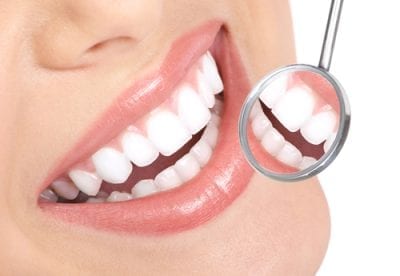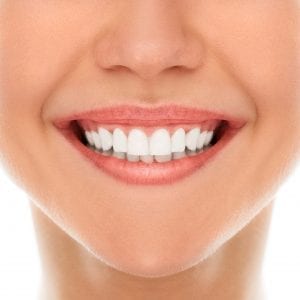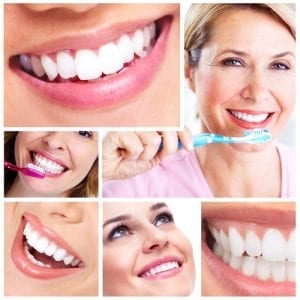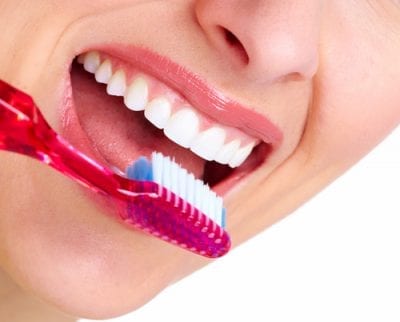Dental discoloration is a cosmetic epidemic that millions of people from all over the world suffer from in varying levels. Even those who brush regularly, gargle often, and floss after every meal may find that the passage of time, aging, environmental factors, and the food that they eat will eventually take their toll on their pearly whites. It’s unavoidable, almost. Just like aging, taxes, and death.
You can use various methods in order to bleach your teeth into whiteness, from in-office whitening to home-use methods like bleaching trays and whitening strips. The cheapest methods you can use is mouthwash and whitening toothpaste (with fluoride) to simply brush the food stains away or you can go the laser teeth whitening route instead. This in-office teeth bleaching technique will make your teeth shine brighter in just one dentist visit.
What Is Laser Whitening?

To those who aren’t in the know, the first thing they might think when they hear the terms “laser” and “teeth whitening” together is someone strapped to a flatbed operating table while a laser is aimed and shot right unto their teeth until the discoloration is all gone. Those are the images such words evoke.
However, laser whitening doesn’t necessarily require high-powered lasers that can burn a hole in your wall. Stains can be effectively eliminated with the assistance of in-office laser and bleach whitening services (such as ZOOM! Whitening) that bleach your tooth white, eliminate stains, and reveal a naturally white smile.
In truth, the act of laser teeth whitening instead involves putting in a bleach and hydrogen peroxide gel over teeth (while protecting the gums and mouth with a dental dam) then shining a laser pen over the teeth to activate the bleaching process, resulting in amazing teeth whiteness when all is said and done.
Which Laser Whitening Service Should You Get?
You can avail of a whole lot of whitening agents as well, but as a buyer you must beware of bad deals. Wariness is called for when it comes to teeth whitening because these whiteners are cosmetic and not subject to FDA standards of testing.
To wit here are the things you need to consider before availing of a laser whitening service.
- Bleaching Gel Safety Concerns: Some of these products are so potent they could damage the structure of your teeth. Sure, they can immediately whiten your teeth by up to 6 shades and the like, but keep in mind that bleach and hydrogen peroxide are powerful substances that can melt and decay the tooth (like the acids in your mouth that cause dental caries if you don’t brush regularly). This can cause complications like teeth sensitivity and brittleness.
- The Thicker the Gel the Better: When it comes to laser whitening, the thicker the gel the better. Why? Because it helps control the bleaching process so that it doesn’t actually destroy the tooth itself and instead simply whitens the enamel and whatnot when the dentist points that laser over your teeth during your laser teeth whitening procedure. All modern or cutting-edge teeth whitening services have this thicker gel that manages the bleaching process better. The thickness of the gel helps control the concentration of the bleach.
- Basic Formula of Whitening Success: The basic formula for whitening success is this—the amount of time bleach has context with teeth and the concentration of the whitening agent. The more concentrated the agent the faster the bleaching, but it runs the risk of teeth damage (whether it’s the outer shell enamel or the inner shell dentin). Your dentist should be skilled enough to make the balancing act of proper laser teeth whitening work to ensure safe and effective whitening every time.
- The Composition of the Gel Itself: Apparently, the gel that’s applied to your teeth in laser whitening has a higher concentration of bleach compared to the one used in bleaching tray whitening. It’s specifically composed of 25% hydrogen peroxide plus other chemicals, thus necessitating the use of a dental dam to protect your mouth and gums from getting chemical burns. It’s this cocktail of chemicals that allows whitening to come about and the laser light merely activates the chemicals to hasten the bleaching process.
- The Laser Light Is Faster: The bleaching gel is usually enough to get your teeth whitened. Just leave it on there like all your whites (that is, white laundry) soaked in bleach overnight and you should get prime results. However, it’s faster to shine a laser pen light (or rather, an ultraviolet pen light) for its heat and light to activate the gel’s bleaching capabilities than to leave the gel on your teeth for an extended period of time because it produces instant results. The UV light increases the reaction rate of the bleach, but the pen light is usually waved around by the doctor to avoid excessive heat that could damage the teeth.
- The Overnight Soaking Is Safer: However, it’s been shown by studies and observation that using bleaching trays (made from a mold done on your teeth so that they’d perfectly fit) snugly worn in your mouth like mouth guards or dental guards is much safer because it uses low concentrations of carbamide peroxide over a long period of time. It’s cheaper too since it costs about $400. On the other hand, laser whitening has advanced enough to allow for lower complication risks if safety is your main concern.
- Cost and Value: The best laser whitening methods will typically cost you from $500 to $1,000 in the United States. On average, the costs usually go to about $650 and it’s rare that it goes beyond that. However, not everyone is willing or able to pay such a steep price for cosmetic dental brilliance. You can defer your payment to your company dental plan or private insurance plan. You can also avail of dental tourism packages to lower the price of the same teeth whitening process to around $300. It’s ultimately a balancing act between which service is safer and more effective versus which one is more affordable.
The Advantages of Laser Whitening Over Other Techniques
There are loads advantages you can get from teeth whitening in the cosmetic sense. However, how does the laser teeth whitening procedure fare against other cheaper or more affordable techniques out there? Let’s take a gander, shall we?
Home-Use Solutions
- Whitening Toothpaste and Mouthwash: On one hand, whitening toothpaste plus mouthwash is the most affordable means of teeth whitening. A tube of the best whitening toothpaste costs only $3 to $7. Antiseptic mouthwash, on the other hand, costs $4. When compared to the costs of laser teeth whitening ($500 to $1,000), that’s many multitudes cheaper. However, there’s a caveat to all this cheapness. This isn’t so much a whitening technique as it is normal dental hygiene plus extra fluoride that protects your teeth from acid.

On one hand, it’s recommended for light staining on the teeth that could be fixed with a couple of brushes. For something more significant or drastic, it’s not as effective as the instantaneous in-office results of laser whitening. On the other hand, it’s significantly safer than its in-office counterpart by helping prevent staining and not causing complications such as teeth sensitivity or brittleness (the bleaching effect happens because hydrogen peroxide contains acid that oxidizes the yellow food stains on your teeth, which can be bad for your teeth at high concentrations).
- Whitening Strips: You can buy over-the-counter whitening strips at your nearest grocery or drugstore. They’re even more effective than whitening toothpaste because it’s a bleaching home system. Whitening strips work by peeling the strip, applying it on the surface of the tooth, and then removing it before rinsing. It also contains peroxide bleach, just like in the case of laser whitening procedures. The difference here is that you need to use these strips for a longer period of time.
In regards to how it stacks up to laser whitening, each has their own pros and cons. Laser whitening is much faster, uses a higher concentration of peroxide bleach in gel form, and uses a dental dam exactly because of how much bleach is being used. It also whitens in terms of the laser, increasing the reaction rate of the bleach. However, whitening strips have an advantage in terms of home use convenience and the fact that it gradually whitens your teeth so as to avoid teeth degradation concerns.
In-Office Solutions
- Bleaching Trays and Gels: This dental bleaching technique that costs between $300 and $400 uses a higher concentration of peroxide bleach compared to whitening strips, but it’s still much lower to what’s offered by laser whitening services. Technically, it’s both in-office and home-use. You get molds made in-office by your dentist and the resulting trays you’re supposed to take home and apply into your mouth yourself with the accompanying bleaching gel. So it’s a mix between in-office and home-use solution.
You can’t buy a bleaching tray OTC because you’re required to give a mold of your mouth and teeth first (the bleaching tray is custom-fit). In regards to its effectiveness compared to laser teeth whitening, it’s certainly cheaper ($400 versus $650 on average). It doesn’t use UV rays. It has lower concentrations of peroxide. It gradually whitens your teeth to a better shade of white. However, it’s not as fast as laser whitening (which requires one visit at the dentist chair at most, taking about two hours).
- Laser Whitening (Brands): It’s hard to compare one laser whitening brand to another. Which is better, ZOOM! Teeth Whitening, BriteSmile, LaserSmile, KoR Deep Whitening, or Beyond? They’re almost interchangeable. Actually, most dentists use ZOOM and it’s the most popular laser teeth whitening service out there. If you ask most any cosmetic dentist in your locality for laser teeth bleaching services, they’ll likely give you the ZOOM treatment. However, if you want to save some money you can go for the less popular alternatives and get roughly the same result.
The thing about picking laser whitening brands or systems is that you shouldn’t do that in the first place. It’s better to look for a laser whitening cosmetic dentist than a laser whitening cosmetic system. All of them promise spectacular results, but it’s best to consult a professional who knows how to handle and execute any brand of laser whitening. Your dentist should also do a better job than a mere article on the web when it comes to recommending a laser whitening system for you after taking a look at the state of your teeth discoloration.
Candidacy
Although the act of teeth whitening is a low-risk procedure (fears of teeth sensitivity and degradation aside, the bleaching gel has advanced enough to control the peroxide so that it can whiten the enamel without degrading the dentil and pulp of the tooth) that’s suitable for a wide variety of patients, not all patients can be candidates for teeth whitening.
- Candidates for Whitening: To be a candidate of laser whitening, you should have mild to moderate teeth discoloration. You should also, in general, not have any other major cosmetic dental procedure done on your discolored teeth. You should also have extrinsic (enamel) instead of intrinsic (dentin) stains.
- Disqualified Candidates: Disqualified candidates for laser-based teeth whitening procedures include the following types of patient.
- Restored Teeth: Anyone with fabrications or restorations of the front teeth, such as dental bonding, dental crowns, and porcelain veneers). Restorative materials respond terribly against bleach. They should be replaced instead of whitened.
- Intrinsic Stains: Any patient with severe gray discoloration, fluorosis (excessive fluoride consumption resulting in discolored teeth), or trauma on the dentin is disqualified because their type of discoloration cannot be fixed with even higher concentrations of bleaching gel (although KoR Whitening Deep Bleaching can do both extrinsic and intrinsic stains).
Conclusion

Regardless of which laser teeth whitening service you avail of, it’s important to remember that this service is expensive (the most expensive teeth whitening option out there), the results may vary from patient to patient, and it’s not permanent (you still need to prevent future discoloration by observing a regular brushing schedule after every meal).
What’s more, you can make the costs of this cosmetic dentistry service much more affordable by availing of a dental plan from an insurance company or whatever is included in your line of work. You can also go on a dental tourism vacation to places like Thailand in order to get your teeth done at a much cheaper price but with the same excellent results.
Thantakit International Dental Center is Thailand’s longest established dental center. Situated in Bangkok, our clinic is renowned across the world as a destination for world-class dentistry, with most of our patients flying to us from Australia.
Please contact us today and get a FREE dental consultation.












